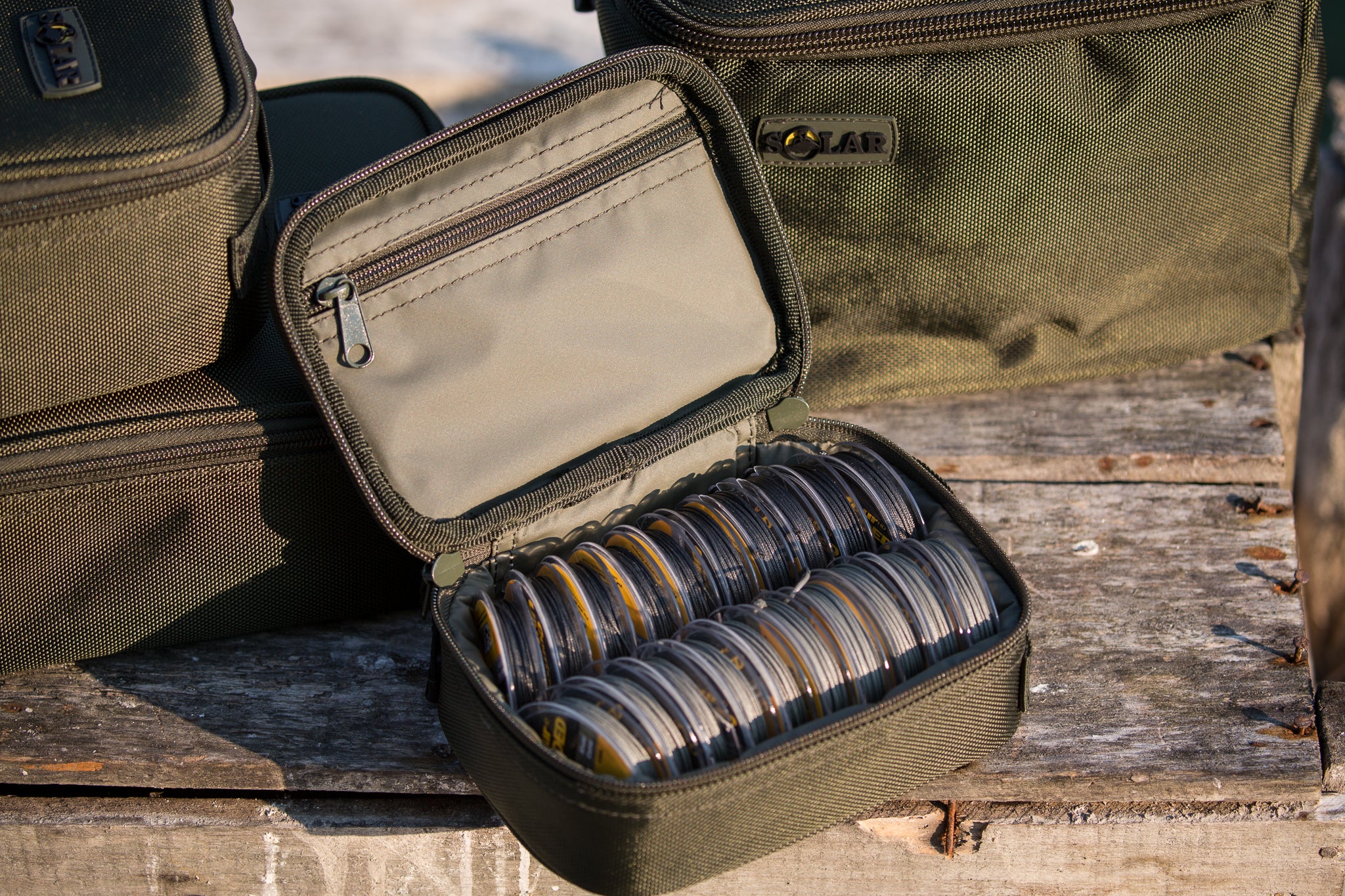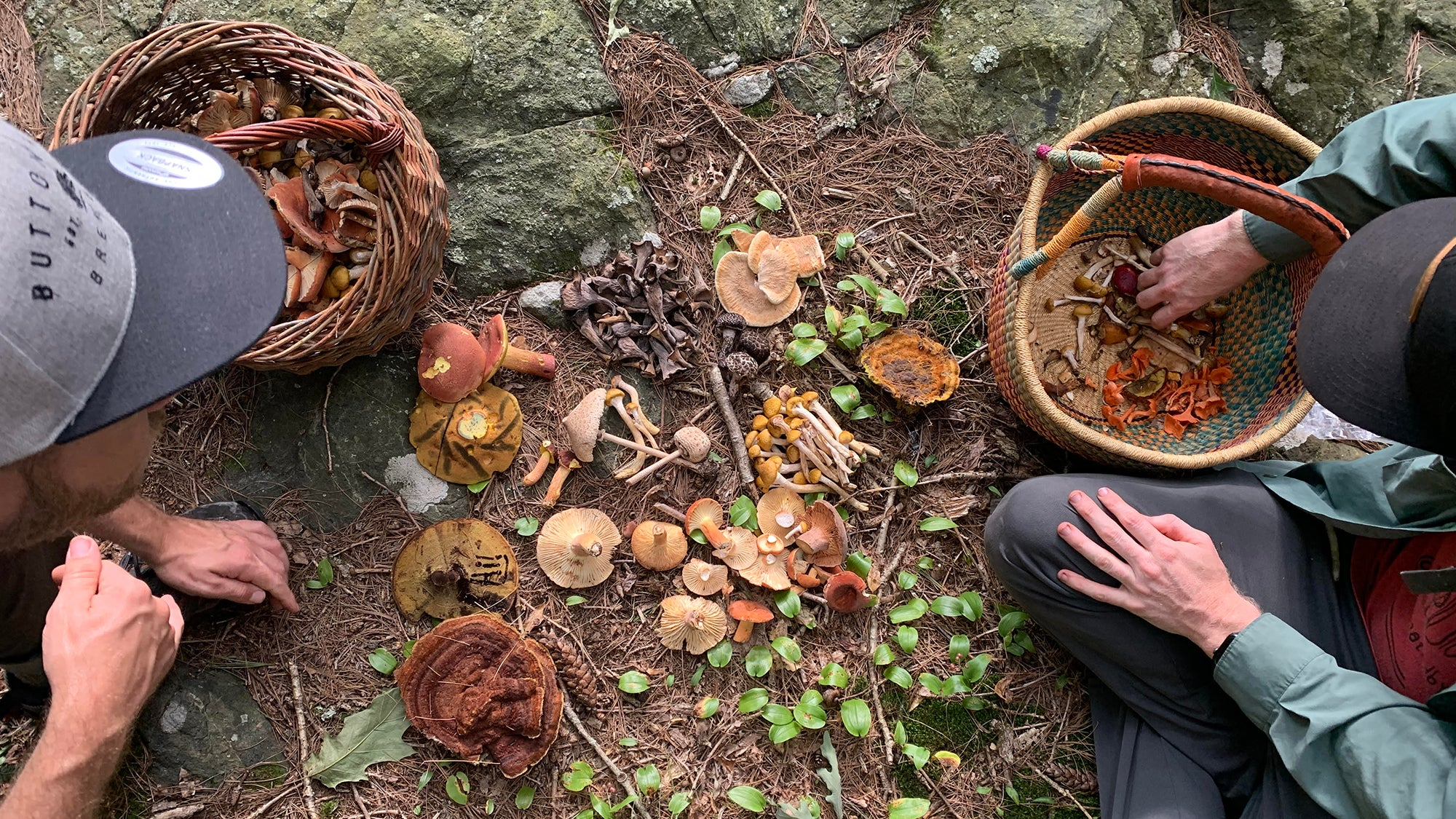mushroom bag ·
mushroom basket ·
Mushroom cultivation ·
mushroom hunting ·
mushroom hunting for beginners ·
mushroom hunting supplies ·
Mushroom identification ·
mushrooms ·
The benefits of using mushroom bags for cultivation
Mushroom bags are an essential tool for growing mushrooms in a controlled environment. These bags come in various sizes, and they are made of materials such as polypropylene or polyethylene. The bags are filled with sterilized substrate, which provides a nutrient-rich environment for the mushrooms to grow.
Mushroom bag cultivation has a rich history dating back to the early 20th century. Before mushroom bags, mushrooms were grown on beds of straw, horse manure, or compost. However, these methods were unreliable, as they were prone to contamination from harmful bacteria and fungi. With the development of sterilization techniques and the use of mushroom bags, growers could finally produce a consistent crop of mushrooms without worrying about contamination.
The benefits of using mushroom bags for cultivation
There are many advantages to using mushroom bags over other cultivation methods. For one, they are a more sterile and controlled environment, which reduces the risk of contamination. Additionally, they are easier to manage than traditional mushroom beds, as they require less labor and can be stacked in a compact space. They are also highly customizable, as growers can adjust the substrate composition and environmental conditions to optimize growth and yield.
Mushroom bags are typically used for the cultivation of oyster mushrooms, shiitake mushrooms, and other varieties. The process involves sterilizing the substrate, inoculating it with mushroom spores, and incubating the bags until the mushrooms grow to maturity. After harvesting the mushrooms, the spent substrate can be recycled or composted, making it an environmentally friendly option.
When choosing mushroom bags, it is important to consider the substrate composition and size of the bag. The substrate should be high quality and free from contaminants, and the bag should be the appropriate size for the mushroom variety being grown. It is also important to sterilize the bags properly to prevent contamination and ensure a healthy crop.
In conclusion, mushroom bags are an essential tool for any mushroom grower looking to produce a consistent and reliable crop. With their customizable substrate compositions and controlled growing environment, mushroom bags offer many advantages over traditional cultivation methods. Whether you are growing oyster mushrooms, shiitake mushrooms, or another variety, investing in quality mushroom bags is the first step towards a successful harvest.

Benefits of using mushroom bags for cultivation
Mushroom cultivation is gaining popularity as people discover the health benefits of these nutritious fungi. However, not everyone has the space or resources to grow mushrooms in a traditional way. Fortunately, there is a cost-effective and space-saving solution: mushroom bags. In this article, we will discuss the benefits of using mushroom bags for cultivation.
Low investment cost
One of the most significant advantages of using mushroom bags is the low investment cost. Compared to building a traditional mushroom growing setup, mushroom bags require minimal investment. You don't need to construct a structure, install lighting or ventilation, or purchase expensive equipment. All you need are the mushroom bags, a growing medium, and the mushroom spores.
Saves space
Another benefit of using mushroom bags is the space-saving aspect. Mushroom bags take up very little space, making them ideal for urban gardeners or people with limited outdoor space. You can stack them on top of each other, allowing you to cultivate more mushrooms in less space. Mushroom bags can also be grown indoors, making them a viable option for people living in apartments or homes without outdoor space.
Enables you to cultivate more mushrooms with less space
Because mushroom bags are stackable and take up very little space, you can cultivate more mushrooms with fewer resources. This is especially beneficial for commercial mushroom growers who want to increase their production without expanding their growing setup. Using mushroom bags allows you to maximize the space you have available and grow more mushrooms in the same area.
Easy to use
Another benefit of using mushroom bags is that they are easy to use. Once you have your mushroom bags and growing medium, all you need to do is add the mushroom spores and follow the instructions. Mushroom bags come with pre-punched holes for ventilation, so there is no need to worry about adding extra ventilation. You also don't need to worry about pests or diseases, as mushroom bags are sterile when you purchase them.

Versatile
Mushroom bags are also versatile. You can use them to grow a variety of mushroom species, including oyster, shiitake, and button mushrooms. You can also experiment with different growing mediums to see which ones work best for your preferred mushroom species.
Using mushroom bags for cultivation has several benefits, including low investment cost, space-saving, enabling you to cultivate more mushrooms with less space, ease of use, and versatility. If you are interested in growing mushrooms but don't have the space or resources for a traditional setup, mushroom bags are an excellent alternative.
Consistent yield
Growing mushrooms can be a rewarding experience, but it's not always easy to maintain a consistent yield. Changes in growing conditions, such as temperature and humidity, can affect the growth of mushrooms, leading to inconsistent yields. Fortunately, using mushroom bags for cultivation can help you achieve a consistent and high yield. In this article, we will discuss how mushroom bags can help you achieve a consistent yield.
Maintains constant growing conditions
One of the main advantages of using mushroom bags is that they help to maintain constant growing conditions. The bags create a microclimate that is conducive to mushroom growth, with consistent temperature and humidity levels. This helps to ensure that the mushrooms grow evenly, producing a more consistent yield.
Allows for better monitoring and control of the growing environment
Using mushroom bags also allows for better monitoring and control of the growing environment. The bags are transparent, which allows you to see the growing conditions inside. This means that you can easily monitor the temperature and humidity levels and make adjustments as needed. Additionally, the bags provide a barrier against pests and contaminants, allowing for a more controlled growing environment.
Helps to produce a consistent and high yield of mushrooms
Using mushroom bags helps to produce a consistent and high yield of mushrooms. The bags provide an ideal growing environment for mushrooms, with consistent temperature and humidity levels. This, combined with the ability to monitor and control the growing environment, helps to ensure that the mushrooms grow evenly and produce a consistent yield.
Easy to use
Another benefit of using mushroom bags is that they are easy to use. Once you have your bags and growing medium, all you need to do is add the mushroom spores and follow the instructions. The bags are pre-sterilized, which means that there is no need to worry about sterilizing the growing medium or the bags themselves. This makes it easy for anyone to grow mushrooms, even if they have limited experience.
Versatile
Mushroom bags are also versatile. You can use them to grow a variety of mushroom species, including oyster, shiitake, and button mushrooms. You can also experiment with different growing mediums to see which ones work best for your preferred mushroom species.
Easy to set up and maintain
One of the main advantages of using mushroom bags is that they are easy to set up and maintain. You don't need any special skills or equipment to get started. All you need is a clean workspace, your mushroom bags, and your preferred growing medium. Simply follow the instructions provided with the bags, and you're ready to go. The bags are pre-sterilized, which means there's no need to worry about sterilizing the growing medium or the bags themselves.
Requires minimal effort and equipment
Using mushroom bags requires minimal effort and equipment. Once you have your bags and growing medium, all you need to do is add your mushroom spores and keep the bags in a suitable growing environment. You don't need any expensive equipment or machinery to maintain the bags. Additionally, the bags are lightweight and easy to move, making them suitable for both commercial and home cultivation.
Suitable for both commercial and home cultivation
Mushroom bags are suitable for both commercial and home cultivation. They can be used to produce large quantities of mushrooms for commercial purposes, or for smaller-scale cultivation at home. This versatility makes them an excellent choice for anyone interested in mushroom cultivation, regardless of their goals or experience level.
Can be used to grow different types of mushrooms
Mushroom bags can be used to grow a variety of mushroom species. This is because the bags offer a sterile environment for the mushrooms to grow in. This makes it easy to control the growing conditions and ensure that the mushrooms grow as expected. Some common types of mushrooms that can be grown in mushroom bags include oyster mushrooms, shiitake mushrooms, and button mushrooms.
Suitable for both indoor and outdoor cultivation
Mushroom bags are versatile and can be used for both indoor and outdoor cultivation. They are suitable for indoor cultivation because they do not require much space and can be kept in a small room or closet. They can also be used for outdoor cultivation, where they can be kept in a shaded area, such as a covered porch or garage. This versatility makes them an excellent choice for anyone who wants to grow mushrooms but has limited space or prefers to cultivate indoors or outdoors.
Can me used in small spaces
Mushroom bags are an ideal choice for anyone who wants to cultivate mushrooms in small spaces. They do not require a large area or special equipment, which makes them an excellent choice for urban gardeners or anyone with limited space. They can be kept in a small room or closet, or even on a balcony or patio. This makes them an excellent choice for anyone who wants to enjoy fresh, homegrown mushrooms, regardless of their living situation.
In conclusion, mushroom bags offer many benefits, including versatility. They can be used to grow different types of mushrooms, both indoors and outdoors, and in small spaces. If you're interested in mushroom cultivation, mushroom bags are an excellent choice. They offer a simple, easy, and flexible way to cultivate fresh, homegrown mushrooms.
Reduced risk of contamination
One of the biggest challenges faced by mushroom cultivators is the risk of contamination. Contamination can occur at any stage of the cultivation process and can result in a loss of time, effort, and resources. Mushroom bags offer many benefits that can help to reduce the risk of contamination during the cultivation process. In this article, we will explore how mushroom bags provide a sterile environment, are easy to handle and transport, and can lower the risk of contamination during the cultivation process.
Sterile environment
Mushroom bags provide a sterile environment that is essential for successful mushroom cultivation. The bags are made from high-quality, sterilized materials that are free from contaminants. This ensures that the mushrooms can grow in a clean and sterile environment, which helps to prevent the growth of unwanted bacteria or fungi that can cause contamination. The bags also have a self-sealing filter patch that allows for air exchange while keeping contaminants out.
Easy to handle and transport
Mushroom bags are also easy to handle and transport. The bags are lightweight and can be moved easily from one location to another. This is especially important during the sterilization process, where the bags need to be moved from the sterilization unit to the cultivation area. The bags can also be stacked, which makes them easy to store and transport in larger quantities.
Lower risk of contamination during the cultivation process
Mushroom bags also offer a lower risk of contamination during the cultivation process. This is because the bags provide a closed system that is less susceptible to contamination from external sources. The bags also have a self-sealing filter patch that allows for air exchange while keeping contaminants out. This means that the risk of contamination is significantly reduced, which increases the chances of a successful cultivation.
In conclusion, mushroom bags offer many benefits that can help to reduce the risk of contamination during the cultivation process. They provide a sterile environment, are easy to handle and transport, and offer a lower risk of contamination during the cultivation process. If you're interested in mushroom cultivation and want to reduce the risk of contamination, mushroom bags are an excellent choice.
Eco-friendly
In today's world, there is a growing concern for the environment and the impact that our actions have on it. As a result, many people are looking for eco-friendly methods of cultivation that reduce waste and conserve resources. Mushroom bags offer a sustainable method of cultivation that produces less waste, uses less water and energy, and is overall an eco-friendly approach. In this article, we will explore the benefits of using mushroom bags for eco-friendly mushroom cultivation.
Produces less waste
Mushroom bags produce less waste compared to other methods of mushroom cultivation. This is because the bags are made from high-quality materials that are reusable and recyclable. Additionally, the bags provide a closed system that allows for better control of the growing environment and prevents contamination. This means that the mushrooms have a higher chance of success, which reduces the amount of wasted resources.
Uses less water and energy
Mushroom bags also use less water and energy compared to other methods of mushroom cultivation. The bags provide a closed system that retains moisture, which reduces the amount of water needed for cultivation. Additionally, the bags require minimal energy for lighting and heating, which reduces energy consumption and associated costs. This means that mushroom bags are a sustainable method of cultivation that is eco-friendly and cost-effective.
A sustainable method of cultivation
Mushroom bags are a sustainable method of cultivation that is beneficial for the environment. The bags are made from sustainable materials that are recyclable and reusable, which reduces waste and conserves resources. Additionally, mushroom bags offer a closed system that allows for better control of the growing environment and reduces the risk of contamination. This means that less resources are wasted and the cultivation process is more efficient and sustainable.
In conclusion, mushroom bags offer many benefits for eco-friendly mushroom cultivation. They produce less waste, use less water and energy, and are a sustainable method of cultivation. If you're looking for an eco-friendly approach to mushroom cultivation, mushroom bags are an excellent choice that can help to reduce your environmental footprint and conserve resources.

How to use mushroom bags for cultivation?
Mushroom bags are a versatile and cost-effective method for growing mushrooms at home or on a larger scale. If you're new to mushroom cultivation, using mushroom bags can seem daunting at first, but with a little bit of practice, it can become a simple and enjoyable process. In this article, we will provide a step-by-step guide on how to use mushroom bags for cultivation.
Step 1: Preparation of the substrate
The substrate is the material that the mushrooms will grow on. The substrate can be made from a variety of materials such as sawdust, straw, or grain. The first step in using mushroom bags for cultivation is to prepare the substrate. Depending on the substrate, this can involve soaking, boiling, or sterilizing the material to create a suitable growing environment for the mushrooms.
Step 2: Filling the bags with the substrate
Once the substrate is prepared, it is time to fill the mushroom bags. Fill each bag with the substrate and leave some space at the top to allow room for the mushroom growth. It's important to ensure that the bags are filled evenly and compactly to create a uniform growing environment.
Step 3: Inoculation with mushroom spawn
Mushroom spawn is a culture of mushroom mycelium that is used to start the growth of the mushrooms. Once the bags are filled with the substrate, it's time to inoculate the bags with the mushroom spawn. This can be done by injecting the spawn into the bag through a small hole or by mixing the spawn with the substrate before filling the bags.
Step 4: Incubation and colonization
After the bags have been inoculated with the mushroom spawn, it's time to incubate the bags. This involves placing the bags in a warm, dark, and humid environment for a period of time. During incubation, the mushroom mycelium will begin to colonize the substrate, creating a network of white, thread-like structures.
Step 5: Fruiting and harvesting
Once the bags are fully colonized with mycelium, it's time for the fruiting stage. This involves exposing the bags to fresh air and light, which will stimulate the growth of the mushrooms. Within a few weeks, the bags will start to produce mushrooms that can be harvested by twisting and pulling them from the substrate. After harvesting, the bags can be reused or disposed of depending on the type of substrate used.
Using mushroom bags for cultivation is a simple and cost-effective way to grow mushrooms at home or on a larger scale. By following this step-by-step guide, you can create a sustainable and efficient growing environment that produces high-quality mushrooms. Whether you're a beginner or an experienced cultivator, using mushroom bags is an excellent choice for cultivating mushrooms.
Tips for successful cultivation
For successful cultivation using mushroom bags, there are a few key tips that growers should keep in mind. One of the most important factors is maintaining proper temperature and humidity levels. Different types of mushrooms have varying requirements, but generally a temperature range of 65-75°F and humidity between 80-90% are ideal. Investing in a quality thermometer and hygrometer can help growers monitor and maintain these conditions.
Choosing the right substrate is also crucial for successful cultivation. Common substrates include straw, sawdust, and coffee grounds, but the type of substrate depends on the specific mushroom being grown. It's important to do research and choose a substrate that will provide the necessary nutrients and support for the mushrooms.
Using quality spawn is another important factor for successful cultivation. Spawn is the vegetative material used to propagate the mushrooms, and using low-quality or contaminated spawn can lead to poor yields or contamination issues. It's recommended to purchase spawn from a reputable supplier or to produce your own using sterile techniques.
Proper lighting and air circulation are also important for successful mushroom cultivation. While mushrooms don't require direct light, they do need some amount of ambient light to trigger fruiting. Growers can use artificial lighting or place the bags in a naturally lit area. Good air circulation helps prevent stagnant air and promotes healthy growth.
By following these tips, growers can increase their chances of successful cultivation and achieve a high yield of quality mushrooms using mushroom bags.
Conclusion
In conclusion, using mushroom bags for cultivation offers a variety of benefits, including cost-effectiveness, space-saving, versatility, ease of use, reduced risk of contamination, and eco-friendliness. Additionally, following tips for successful cultivation, such as maintaining proper temperature and humidity, choosing the right substrate, using quality spawn, and ensuring proper lighting and air circulation, can help growers achieve a high yield of quality mushrooms.
We encourage readers to try mushroom bag cultivation for themselves, whether as a hobby or a commercial venture. With the proper preparation and care, it can be a rewarding and enjoyable experience.
As for the future of mushroom bag cultivation, we believe it will continue to grow in popularity as more people become interested in sustainable and eco-friendly methods of food production. With advancements in technology and techniques, the possibilities for cultivating a variety of mushrooms using mushroom bags are endless.
In summary, using mushroom bags for cultivation offers numerous benefits and is a simple and effective method of growing mushrooms. By following best practices and tips, growers can achieve a consistent and high yield of quality mushrooms. We encourage everyone to give it a try and see the results for themselves.























